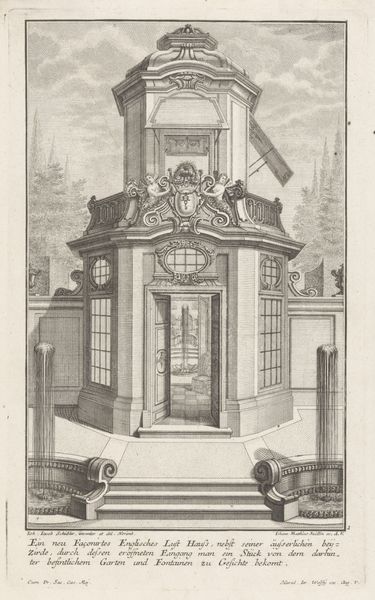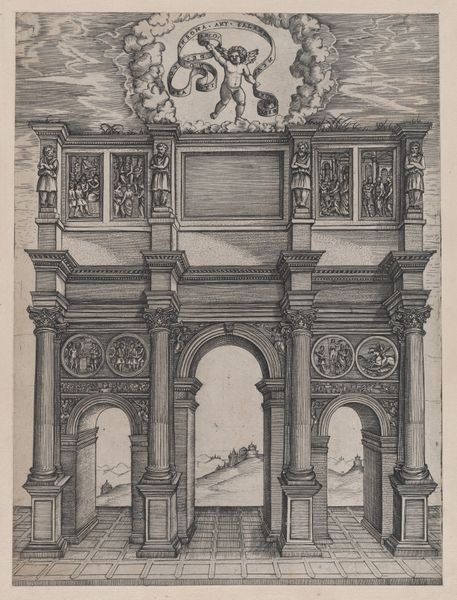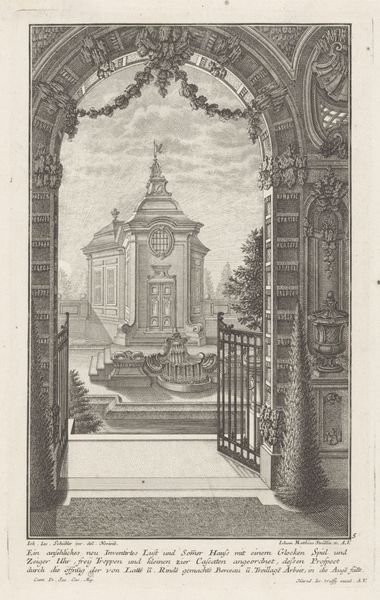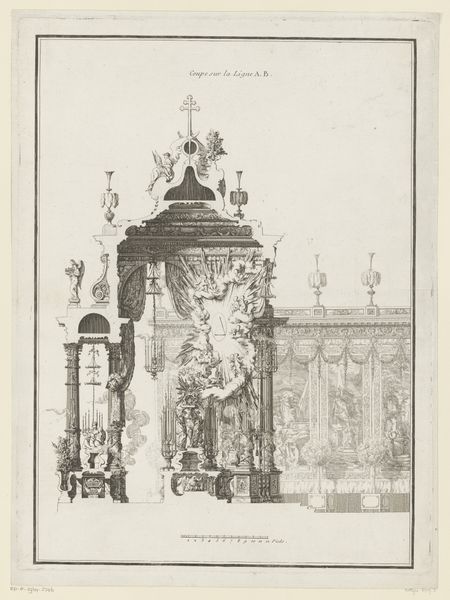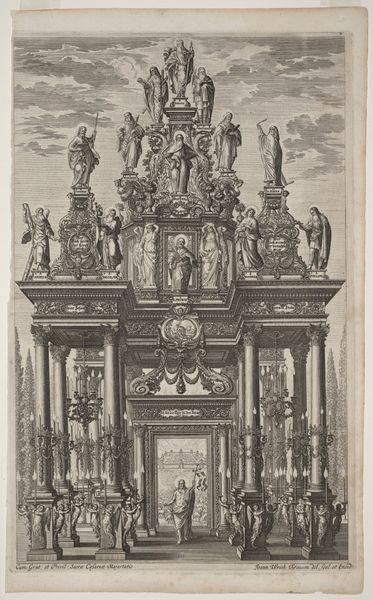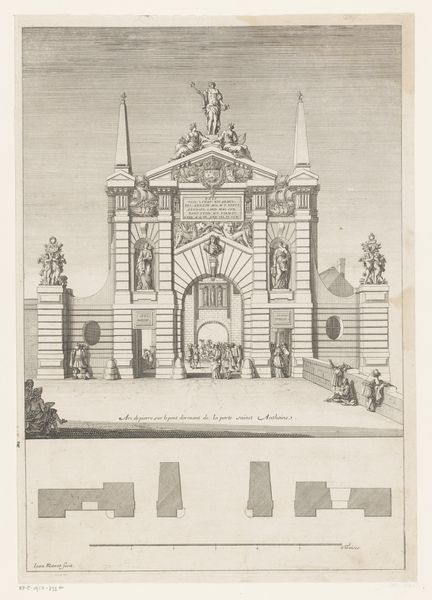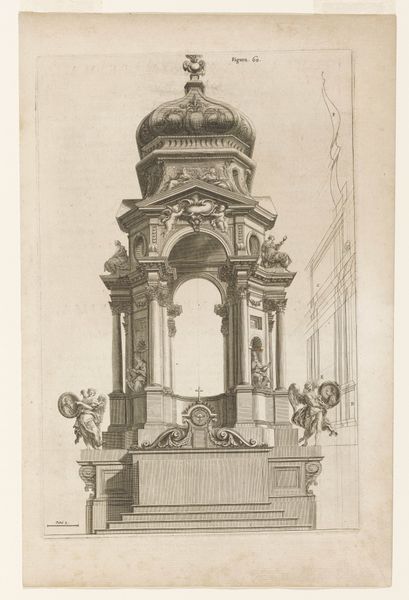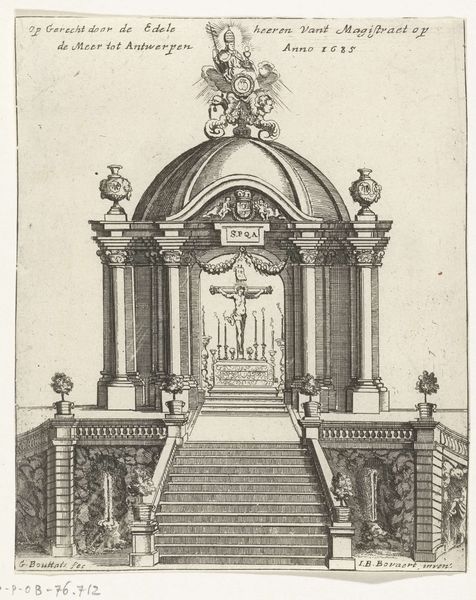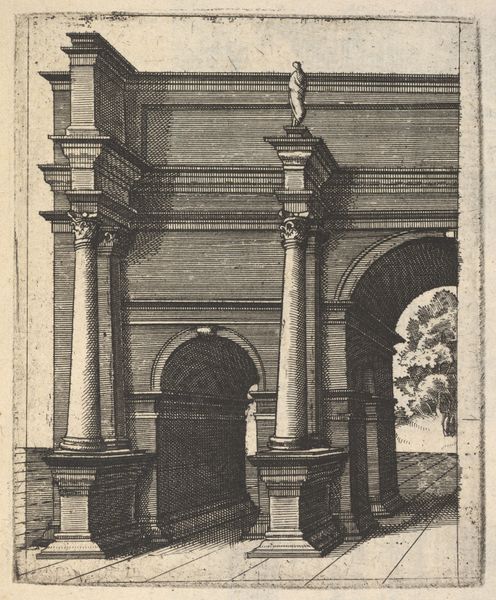
print, engraving, architecture
#
baroque
# print
#
landscape
#
cityscape
#
engraving
#
architecture
Dimensions: height 298 mm, width 185 mm
Copyright: Rijks Museum: Open Domain
Editor: This print, “Tuinhuis met zonnescherm,” created after 1724 by Johann Matthias Steudlin, depicts a garden pavilion. The architectural details are so precise, and yet there's a stillness to it, like a stage set waiting for actors. What do you see in this piece beyond the architectural rendering? Curator: I see a visualization of power, a staged expression of dominance over nature. The precise engraving technique, typical of the Baroque style, elevates a simple garden structure into a monumental statement. How does this staged presentation speak to the social context of the time? Editor: I suppose it speaks to the wealth and status of whoever commissioned or owned such a structure? A place of leisure, designed with such elaborate detail. Curator: Precisely. But think also about the print itself. It served to circulate ideas, didn’t it? And whose ideas were deemed worthy of circulation? Who had the means to build such structures and disseminate images of them? The "sunscreen" also speaks volumes about controlling one’s environment – an idea accessible only to a select few. How might we interpret this in light of environmental and social justice concerns today? Editor: So, the print becomes not just a depiction of a garden pavilion but also a record of societal privilege and control...It’s made me realize how even seemingly benign landscape scenes can be loaded with meaning about power. Curator: Exactly. By analyzing the layered context, we reveal the ideology embedded within its lines, encouraging reflection on contemporary imbalances. We must see these historical structures critically.
Comments
No comments
Be the first to comment and join the conversation on the ultimate creative platform.
